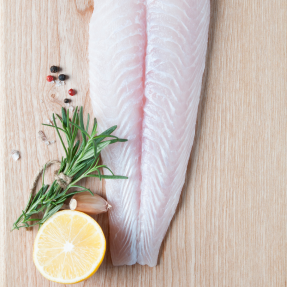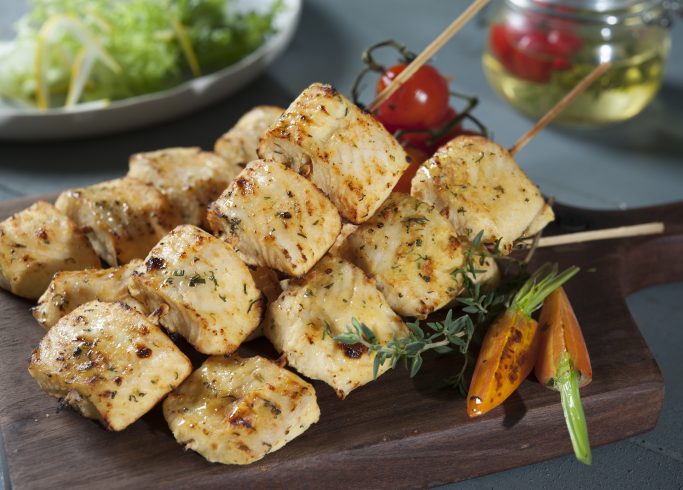[Industry news] Pangasius prices spike again on limited raw materials
23 September 2017
[Reposted from Undercurrentnews, please find the article here. We are not in anyway responsible for the content of the original source]
The price of pangasius exports from Vietnam have peaked again in early September, on limited availability of raw materials, sources told Undercurrent News.
Producers and EU importers confirmed prices had stabilized at a high of $2.55 per kilogram, delivered to the EU freight-on-board from Ho Chi Minh City. This price level was reached after a dramatic rise at the end of August, and $2.55/kg remains “about right” for mid-September pricing, said one Vietnamese exporter.
“Some major EU customers have pushed back hard, suggesting they could look to pollock or tilapia to substitute in for pangasius,” said this source.
“But we’ve successfully resisted and maintained those prices we saw at the end of August. We say that given the sizes the EU wants, and the investments it takes to meet requirements there, this is a fair price.”
The $2.55/kg level is up 9% on July, and up 13% on June.
He also added that Chinese demand is strong across all sizes now, so the competition supports higher prices.
“We see strong demand from China, however supply is not enough especially for the specific sizes this market wants,” agreed Vinh Hoan Corporation CEO Tam Nguyen.
“Earlier this year, fingerling supply was very short and [they were] very expensive; starting from this month [September], and expected until January next year, the harvest is extremely limited, therefore raw material price increases sharply,” she said.
The first source said he wasn’t sure how raw material supplies had suddenly become so short; there was a shortage of fingerlings put into ponds early in the year, but farmers have had time to correct this, and prices have been attractive enough that they shouldn’t have been put off stocking, he mused.
However other sources, including Tam, confirmed the fingerling shortage earlier in the year was still impacting supply now.
One firm exporting to the US said that a shortage of fingerlings during Q1 2017 saw prices for the juvenile fish double; hence while the returns may have been good for adult pangasius, most farmers could not afford fingerlings at that time.
Hence, harvests of that crop are now arriving, and are thin on the ground. This could last into the first quarter of 2018, it said.
US prices pass $2 on short raw material supply
US imports of pangasius have been rising in price for some time, but until now it had been largely put down to the increased costs of border inspections under the new 100% inspection rate required by the Food Safety and Inspection Service (FSIS) of the US Department of Agriculture (USDA).
Now, two importers told Undercurrent increases were down to short raw material availability too.
One put replacement prices at just over $2.00 per pound for less than 85% moisture fillets; just under that price level for less than 86%.
A second said USDA inspections were still pushing prices up, but had heard from Vietnamese exporters that raw materials were in short supply, and had jumped some 20% in price.
“This is probably the highest sell market since 2006 or 2007,” he said. “There’s not many alternatives for whitefish even at current prices.”
Bob Noster, national sales manager in procurement for shrimp and pangasius with Seattle Shrimp & Seafood Co., told Undercurrent replacement prices had continued their upward trend, “as demand is strong for the China market after the Vietfish exhibition”.
“Packers are paying farmers higher to secure raw material for existing contracts, around VND 25,000/kg; up from VND 23,000/kg in August,” he added.
He put prices at “$1.95 freezer, however, with higher costs related to replacement and inspections, we can expect selling prices to be $2.00 and above in the coming weeks”.
Vinh Hoan’s Tam noted it was hard to tell how US demand was at the moment, given procurement and export activities “have been quite adjusted by logistic reasons due to the new inspection program”.
It took some time for the firm to adapt to new labeling and the USDA’s bringing forward of the date from which it would run 100% inspections, she said.
“For the prevention of overloaded storage and inspection capacity in the US, we plan the shipments quite carefully and aren’t shipping as much as we normally do; plus there’s not much raw material available.”
Vinh Hoan hasn’t suffered from a lack of coldstore space, but has seen delays caused by too few inspectors taking on a much larger role than before, she said.
“This has caused quite a big problem for the containers arriving at this ‘transitional’ time. We are hoping that FSIS will give the industry and also their inspectors more transitional time for smooth implementation of the rule.”
Noster added that Vietnamese packers have concerns about US freezer capacity on the west coast, and since August there has been a “significant decline of exports to the US due to the strict testing of FSIS”.





![Demystifying Pangasius: Debunking Common Myths and Misconceptions 3 41 [All in Fillets] 2901 1 HIGH](https://www.vinhhoan.com/wp-content/uploads/2024/06/41_All-in-Fillets-2901-1-HIGH-683x490.jpg)




